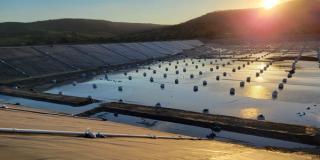
Tailings & Mine Waste

SLR will be exhibiting at, and attending the Tailings & Mine Waste 2024 Conference, hosted by Colorado State University, in Westminster, Colorado from the 10th to the 13th of November 2024.
We are thrilled to be exhibiting at the upcoming event. Our global Mine Waste Engineering team will be attending and ready to share their expertise and are looking forward to meeting up with you.
Find us at booth #61 on the back left side of the showroom.
About Our Presentation
Some Considerations in the Stability of Tailings Dams Subjected to Blasting Vibration
Ezra Coyle | Tuesday, November 12th at 3:30 PM
Ground vibration guidelines are typically established for blasting sites to prevent damage to adjacent facilities or infrastructures. However, blast-induced vibrations represent significant challenges to the geotechnical engineer during the design and construction of the tailings dams in large part due to the considerable uncertainty in the shear strengths of the different components of the structure. In addition, blast-induced vibrations are associated with short-duration high-frequency pulses, that are fundamentally different from ground vibrations caused by earthquakes. The objective of this study is to review the application of the Pseudo-static approach in assessing the stability of tailings dams subjected to blasting vibrations.
The facility analyzed in this paper is a downstream, raised-zoned rockfill embankment with a two-layered filter system on the upstream slope. The facility is in operation and drill and blast activities are planned in the tailings facility basin for rock quarrying purposes. A significant potential impact from blasting near the dam would be the impact to the integrity of the filter materials placed on the upstream slope of the dam. Dynamic loads that exceed the design peak ground acceleration can lead to potential sloughing of the filters.
The paper presents the method and results obtained by the pseudo-static approach to analyze the stability of the slopes subjected to blast vibrations. The blast vibration at the bedrock is treated as a simple harmonic motion in the horizontal direction. Maximum allowable peak particle velocity values are proposed for different critical sections of the dam. The results show that the potential slough in the filter layers upstream of the dam is identified as a credible failure mode that governs the dam's safety and appropriate vibration limits. The study highlights the importance of monitoring and understanding the properties of the different components of the tailings dams that may be impacted by blasting vibrations.

